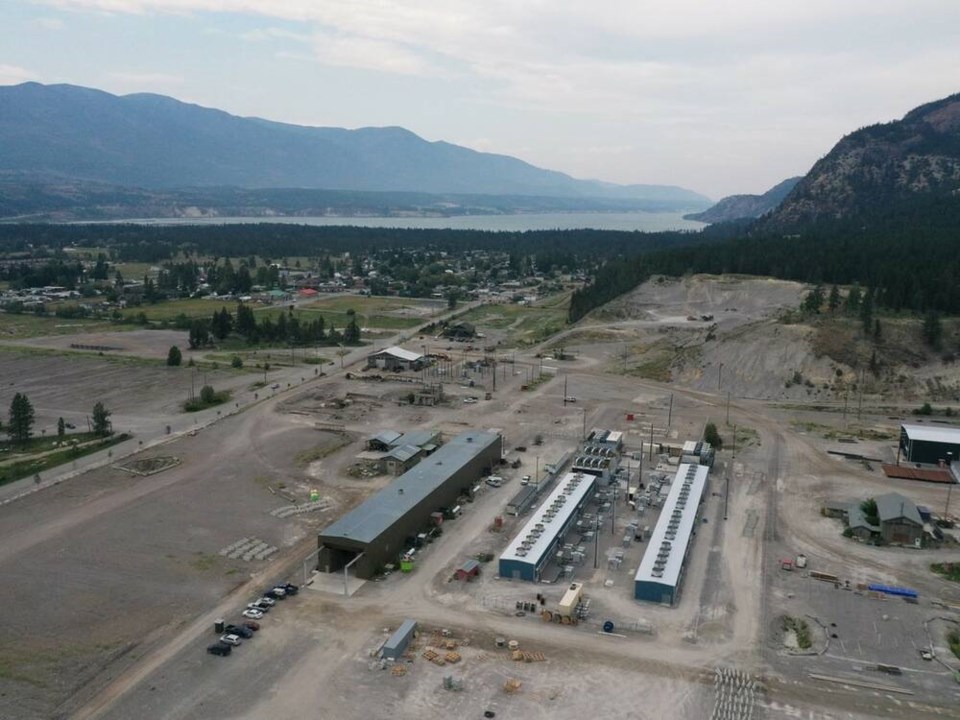B.C. Hydro continues to receive inquiries from would-be cryptocurrency miners even as the province has hit pause on new connections to the power grid and new evidence questions the environmental sustainability of the so-called mining process.
Bitcoin is the primary cryptocurrency of mining interest and Hydro officials hoped that the collapse of its value to US$21,000 per coin in late November of last year from a high over US$60,000 in April of 2022 would help “sort out” the industry, according to Dave DeYagher, a manager of business development.
“And maybe we’d go back to some normalcy,” DeYagher said. But, “We’re still seeing requests for pretty large projects.”
Cryptocurrency miners have been drawn to B.C. for relatively cheap hydroelectric power that, for the moment, the province has in surplus.
For bitcoin, the first and most prominent so-called cryptocurrency, digital assets are created by computers solving hugely complex equations to unlock fractions of individual coins. Then every solution must be verified by other computers in what the industry refers to as the blockchain. Bitcoin mines are huge data centres filled with computer servers churning away at the necessary calculations, often 24 hours a day, seven days a week.
Hydro has committed 273 megawatts of power generation — enough to heat and light at least 55,000 homes — to cryptocurrency miners already in operation or in advanced stages of construction. The province, however, hit pause when new requests started to surge, threatening to overwhelm B.C.’s power surplus.
The enormous demand that miners are putting on electricity grids around the world is raising more questions about the industry’s sustainability.
A recent investigation by the New York Times attempted to quantify the power being used by the largest bitcoin miners in the U.S. along with the greenhouse gas emissions associated with the generation of that electricity.
Using the analysis of the non-profit tech firm WattTime, the newspaper estimated that the 34 largest bitcoin mines in the U.S. caused almost 15 million tonnes a year in greenhouse gas emissions.
Industry officials argue that the Times’ investigation unfairly maligns what they view as unlocking a new digital economy that is already entrenched.
However, WattTime’s formula found that even bitcoin mines that used renewable power for their operations couldn’t separate themselves from emissions because of how intertwined the system is, which raises questions even for B.C. operations, according to economist Werner Antweiler.
“Here, in B.C., you guys are cleaner, but it still doesn’t make the whole operation clean,” said Antweiler, an environmental economist in the Sauder School of Business at the University of B.C. “Because you cannot dissociate a single (bitcoin) transaction from the global footprint.”
Any time bitcoins or fractions of coins are sold or exchanged, those transactions also need to be verified.
“So basically, the transaction that’s initiated triggers this avalanche of mining all around the world on a relatively proportional basis,” Antweiler said. “So the emissions that are associated with each transaction are global, it cannot be localized.”
The industry, however, bristles at characterizations of their sector as an excessive consumer of electricity, compared with other industries that face less scrutiny.
B.C.-based bitcoin mining operations contacted by Postmedia did not respond to questions by deadline, but the Canadian Blockchain Consortium, a national association that represents data companies involved in mining has rejected criticism of the sector.
British Columbia isn’t alone in limiting new cryptocurrency operations. Manitoba put a moratorium on new crypto mining last year and Quebec has put restrictions on the industry that include higher rates and a requirement to curtail operations during peak demand.
On the Consortium’s website, executive director Koleya Kerringten called the restrictions as misguided and didn’t consider the benefits that bitcoin can provide as a decentralized, peer-to-peer means of financial exchange.
Kerringten wrote that the industry estimated it is cleaner than it is made out to be because 60 per cent of its power globally comes from renewable sources compared with just 29 per cent of overall electricity generation.
Kerringten argued that Bitcoin mining can generate revenue for utilities and act as “a preferential consumer” for off-peak electricity.
Cryptocurrency mining arrived in B.C. in earnest starting around 2018 at the same time sawmills were closing in a painful round of industry downsizing, which DeYagher, said offered “a perfect storm,” for the emerging sector.
Bitcoin miners were able to use the existing power connections of closed mills and take up power demand they were no longer consuming.
Now, the problem for B.C. is requests from bitcoin miners now add up to 2,000 megawatts, which is equivalent to almost twice the output of the Site C dam that B.C. Hydro is building, DeYagher said.
B.C. is also trying to support other new industries under its plan to reduce greenhouse gases, and encourage the liquefied natural gas sector to electrify operations.
“We realized if we served all the crypto miners today, we’d have nothing left for these CleanBC initiatives and nothing left for supporting these other new industries,” DeYagher said.
B.C. Hydro is in the early stages of consultations with First Nations, communities and consumers to gauge interest in cryptocurrency and what constraints. It hopes to have a clearer picture in the next year to 16 months.



